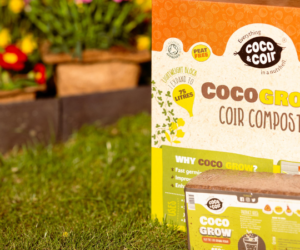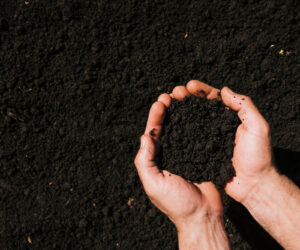Ways to Get Your Kids Interested in Gardening
Gardening is a hobby that many of us pick up in our twenties. But don’t you think it is too late to start? Our childhood would have been way more fun and fulfilling if we had started early. With the rapid increase in environmental pollution, gardening should become second nature for the next generation. Gardening is also an excellent way to connect with nature and develop patience and responsibility.
Here are some simple and innovative ways to introduce gardening to your kids.
Start with Kid-Friendly Plants
Children thrive on instant gratification. One of the most effective ways to get them interested in gardening is by starting with plants that are simple to grow and offer quick, tangible results. Also, to prevent plants from dying or not sprouting, make sure you create the ideal environment for them. Check for climatic conditions, use 100% natural composts, and research the water and sunlight requirements for the plants you want to grow
- Quick-Growing Plants: Consider starting with radishes, sunflowers, or beans. Radishes, for example, can sprout within days and be ready to harvest in as little as three weeks. Sunflowers grow tall quickly, and their large, bright blooms will captivate young gardeners.
- Colourful Flowers: Plants like marigolds, zinnias, and snapdragons are easy to grow and add vibrant colours to the garden. Their visual appeal can make the garden a more inviting and exciting place for kids.
- Edible Plants: Growing plants that kids can eat, like cherry tomatoes, strawberries, or herbs, adds more fun. There’s something special about picking and eating food straight from the garden, and it can also encourage healthy eating habits.
Create a Themed Garden
Themed gardens are a fantastic way to make gardening more imaginative and engaging for children. Creating a narrative around the garden can transform it into a magical space where kids’ imaginations can run wild.
- Fairy or Dinosaur Garden: Set up a small section of the garden with miniature fairy houses, toadstools, or tiny bridges for a fairy garden. Alternatively, small dinosaur figurines and prehistoric plants (like ferns) can create a dinosaur garden. These themes can transport children to another world, making gardening feel like an adventure.
- Pizza Garden: A pizza garden is both fun and practical. Plant ingredients such as tomatoes, basil, peppers, and oregano to make homemade pizzas. This teaches kids about where food comes from and gives them a delicious reward at the end of the gardening process.
- Butterfly Garden: Attracting butterflies to your garden can be a magical experience for kids. Plant flowers like milkweed, lavender, and coneflowers are known to attract butterflies. You can also teach kids about butterflies’ life cycles and their importance as pollinators.
Use Fun Tools and Accessories
Giving kids their own set of gardening tools and accessories can make them feel more involved and responsible for their gardening tasks. Make sure these tools are kid-friendly, safe, and easy to use.
- Child-Sized Tools: Invest in child-sized gardening tools, such as trowels, watering cans, and gloves. These tools are easier for small hands to use and come in fun colours and designs that make gardening more appealing.
- Personalised Pots: Let kids decorate their pots using paint, stickers, or markers. Personalising their gardening space gives children a sense of ownership and pride in their work, making them more invested in the process.
Incorporate Crafts and DIY Projects
Gardening doesn’t have to be limited to planting and watering. Incorporating crafts and DIY projects can make the experience more creative and engaging.
- Rock Painting: Gather some smooth rocks and let kids paint them with bright colours and patterns. These rocks can be used as garden markers or decorations, adding a personal touch to the garden.
- Bird Feeders: Use pinecones, peanut butter, and birdseed to create simple bird feeders. Hang them in the garden and watch as birds come to visit. This project not only adds to the garden’s ecosystem but also provides an opportunity to teach kids about different bird species.
- Scarecrows: Building a small scarecrow together can be a fun family project. Use old clothes, hay, and creativity to create a unique garden guardian. The scarecrow can be a whimsical addition to the garden, adding character and charm.
Make it a Learning Experience
Gardening is an amazing way to teach kids about science, nature, and the environment. You can turn gardening into a hands-on learning experience by incorporating simple experiments and educational activities.
- Science Experiments: Conduct experiments like sprouting seeds in a jar or observing how plants grow towards light (phototropism). These activities help kids understand the basic principles of plant biology and can spark an interest in science.
- Plant Doctor: Create a game in which your kids are the doctors and the plants are the patients. Address the key plant symptoms and their associated concerns, and educate your kids on how to treat them to make the plants feel better.
- Bug Hunts: Organise a bug hunt in the garden, where kids can search for different insects and learn about their roles in the ecosystem. Provide a magnifying glass and a bug identification chart to make the activity more interactive and educational.
- Growth Chart: Create a plant growth chart and encourage kids to measure and track how tall their plants grow over time. This can teach them about the growth process and the importance of caring for living things.
Engage in Sensory Gardening
Gardening is a multi-sensory experience, and engaging all of a child’s senses can make it even more enjoyable. Sensory gardening focuses on plants that stimulate sight, touch, smell, taste, and sound.
- Touch and Feel: Grow plants with interesting textures, like lamb’s ear (with its soft, fuzzy leaves) or succulents (with their thick, fleshy leaves). Encourage kids to feel the different textures and describe what they feel.
- Smell: Plant fragrant herbs or flowers, such as mint, lavender, or rosemary. Invite kids to smell the plants and talk about the different scents. This can also be a great introduction to aromatherapy and the calming effects of nature.
- Taste: Involve kids in tasting the fruits, vegetables, or herbs they’ve grown. Harvesting and tasting their produce can be a rewarding experience, connecting them to the food they eat and fostering an appreciation for fresh, homegrown produce.
Introduce Gardening Games
Turn gardening into a game to keep kids entertained and engaged. Incorporating play into gardening tasks makes the activity feel less like work and more like fun.
- Treasure Hunt: Create a map and hide small toys or treats around the garden for them to find. Try including clues that educate them about the plants around the garden for your older kids. This game improves their sense of exploration and curiosity.
- Watering Relay: Turn watering the garden into a race by timing how quickly kids can water all the plants using a watering can or hose. This adds a competitive element to gardening and makes a routine task more exciting.
- Plant Bingo: Create bingo cards with pictures of plants, bugs, or garden tools. As kids explore the garden, they can mark off what they find on their bingo cards. This game encourages observation and can be fun to learn about different plants and insects.
Grow a Garden Journal
Keeping a garden journal is a creative way for kids to document their gardening experiences. It also provides a keepsake they can look back on to see how much their garden—and their knowledge—has grown.
- Drawing and Writing: Encourage kids to draw pictures or write about their gardening activities in a journal. They can document what they planted, how it grew, and any exciting observations they made. This activity helps develop literacy and artistic skills while reinforcing their gardening knowledge.
- Photo Diary: Take photos of the garden throughout the growing season and create a scrapbook together with your kids. Include pictures of the kids planting, watering, and harvesting and photos of the plants growing. This visual diary can be a fun and great way to celebrate their gardening achievements.
Harvest and Cook Together
Harvesting the fruits of their labour is one of the most rewarding parts of gardening for kids. Involve them in harvesting and take it a step further by cooking together using the produce they’ve grown.
- Harvest Party: Make harvesting a special event by organising a small harvest party. Prepare snacks, play music, and celebrate the garden’s success. This reinforces the idea that gardening is something to be proud of and to enjoy.
- Cooking: Involve kids in cooking meals with the vegetables, fruits, or herbs they’ve grown. Whether making a salad with fresh lettuce and tomatoes or baking a pie with homegrown strawberries, cooking with garden produce teaches kids about the connection between the garden and the kitchen.
Host a Mini Farmers Market
Set up a mini farmers market at home where kids can sell their garden produce to family members. This activity teaches them about entrepreneurship, responsibility, and the value of hard work.
- Selling Produce: Allow kids to set up a small stand to display and “sell” their garden produce. They can make signs, decide on prices, and handle “transactions” with play money. This gives them a sense of accomplishment and helps them understand earning through effort.
- Trading: Encourage kids to trade their produce with friends or neighbours, making it a social and interactive experience. This can also introduce them to bartering and sharing resources within a community.
Gardening can be an enjoyable and enriching activity for kids when approached with creativity and enthusiasm. Not only does gardening teach valuable life skills, but it also helps children develop a love for nature, an appreciation for where their food comes from, and a sense of responsibility for the planet.












